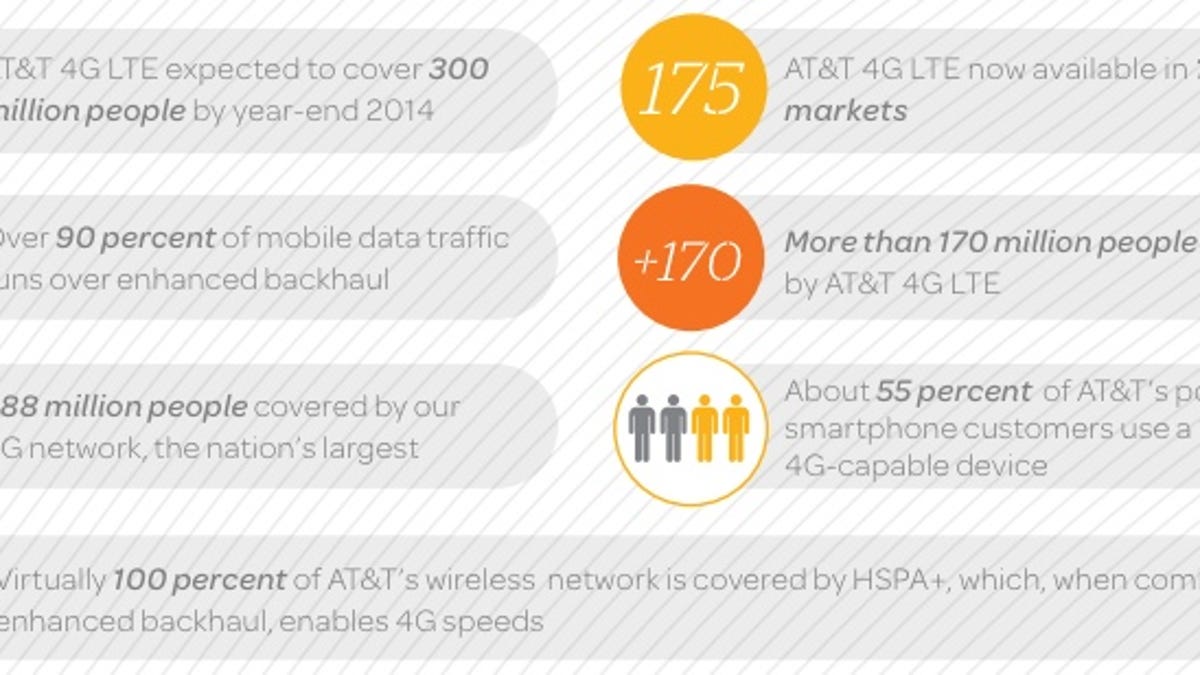AT&T's 4G LTE hits 175 markets
The carrier adds 14 new LTE markets to its total U.S. coverage, bringing the grand total to 175 areas.

LTE coverage bragging rights are usually a numbers game, and with the rollout of fast 4G in 14 new markets, AT&T has brought its total numbers up to 175.
Alphabetically, the new markets are:
- Beaumont, Texas
- Binghamton, N.Y.
- Carbondale-Marion, Ill.
- Fort Pierce, Fla.
- Fort Smith, Ark.
- Fresno, Calif.
- Houma, La.
- Jefferson City, Mo.
- Lakeland-Winter Haven, Fla.
- Las Cruces, N.M.
- Montgomery, Ala.
- Mount Vernon, Wash.
- Palm Coast, Fla.
- Temple-Killeen, Texas
Verizon, meanwhile, covers 486 markets with 4G LTE.
In terms of absolute population coverage, AT&T expects to supply fast 4G to 250 million people by the end of 2013 and 300 million by the end of 2014. In comparison, Verizon already covers 273 million.
As important as they are, LTE coverage isn't purely about numbers, however. Third-party network tester Root Metric recently lauded AT&T for its faster LTE speeds than its arch-rival, and the company has shared details about how it invests in local infrastructure, such as San Francisco, to deliver an amped-up user experience.
Market numbers aside, the battle for LTE supremacy is still alive and well between Big Red and Ma Bell, with Sprint and now T-Mobile still struggling to catch up.

